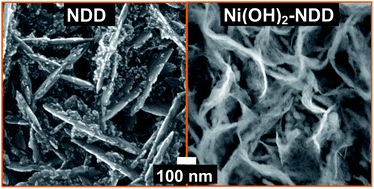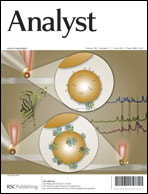A high performance non-enzymatic glucose sensor based on nickel hydroxide modified nitrogen-incorporated nanodiamonds†
Abstract
A highly selective, sensitive, and stable non-enzymatic glucose sensor based on Ni hydroxide modified nitrogen-incorporated nanodiamonds (Ni(OH)2-NND) was developed. The sensor was fabricated by e-beam evaporation of a thin Ni film on NND followed by the growth of Ni(OH)2 using an electrochemical process. It was found that the Ni film thickness greatly affects the morphology and electro-catalytic activity of the as-synthesized electrode for non-enzymatic glucose oxidation. Owing to its nanostructure characteristics, the best sensor fabricated by 150 nm Ni deposition showed two wide response ranges, namely, 0.02–1 mM and 1–9 mM, with sensitivities of 3.20 and 1.41 mA mM−1 cm−2, respectively, and a detection limit of 1.2 μM (S/N = 3). The sensor also showed good long-term stability as well as high selectivity in the presence of interferences such as ascorbic acid, acetaminophen, and uric acid. This finding reveals the possibility of exploiting the NND as an electrochemical biosensor platform where high performance addressable sensor arrays could be built.


 Please wait while we load your content...
Please wait while we load your content...